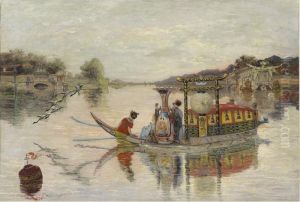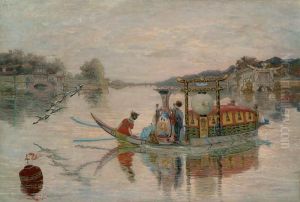Jules Le Coeur Paintings
Jules Le Coeur was a French landscape painter and sculptor who lived during the 19th century. Born on April 20, 1822, in Paris, France, he was part of the Barbizon School, a group of artists who veered away from the formal traditions of academic painting and sought inspiration in nature, directly painting from the landscapes around them.
Le Coeur's work is often overshadowed by his more famous contemporaries such as Jean-François Millet and Théodore Rousseau, but he played a significant role in the development of landscape painting. His approach to art was characterized by a strong realism and a focus on capturing the mood and atmosphere of the forest of Fontainebleau, a popular subject among the Barbizon painters.
Jules Le Coeur had an aristocratic background and was well-educated. He initially pursued a career in law before turning to art. He became close friends with the likes of Millet and Rousseau and was also known for his association with the famous sculptor Auguste Rodin. In fact, Rodin worked as Le Coeur's studio assistant in the early stages of his career.
Despite his connections and talent, Le Coeur did not achieve significant commercial success during his lifetime. His dedication to the Barbizon School's ideals and his exploration of the natural environment were reflected in his paintings, which featured a nuanced use of light and shadow to depict the French countryside. Le Coeur was also interested in animal anatomy, and this interest informed his sculpture work, which was well-regarded among his peers.
Jules Le Coeur's life was marked by tragedy and personal turmoil. He experienced financial difficulties and struggled with mental health issues, which led to his premature death. He passed away on July 9, 1869, in Montargis, France. Although his work was not widely recognized during his lifetime, Le Coeur's contributions to landscape painting and sculpture have been reassessed by art historians, and he is now considered an important figure in the Barbizon School movement.

